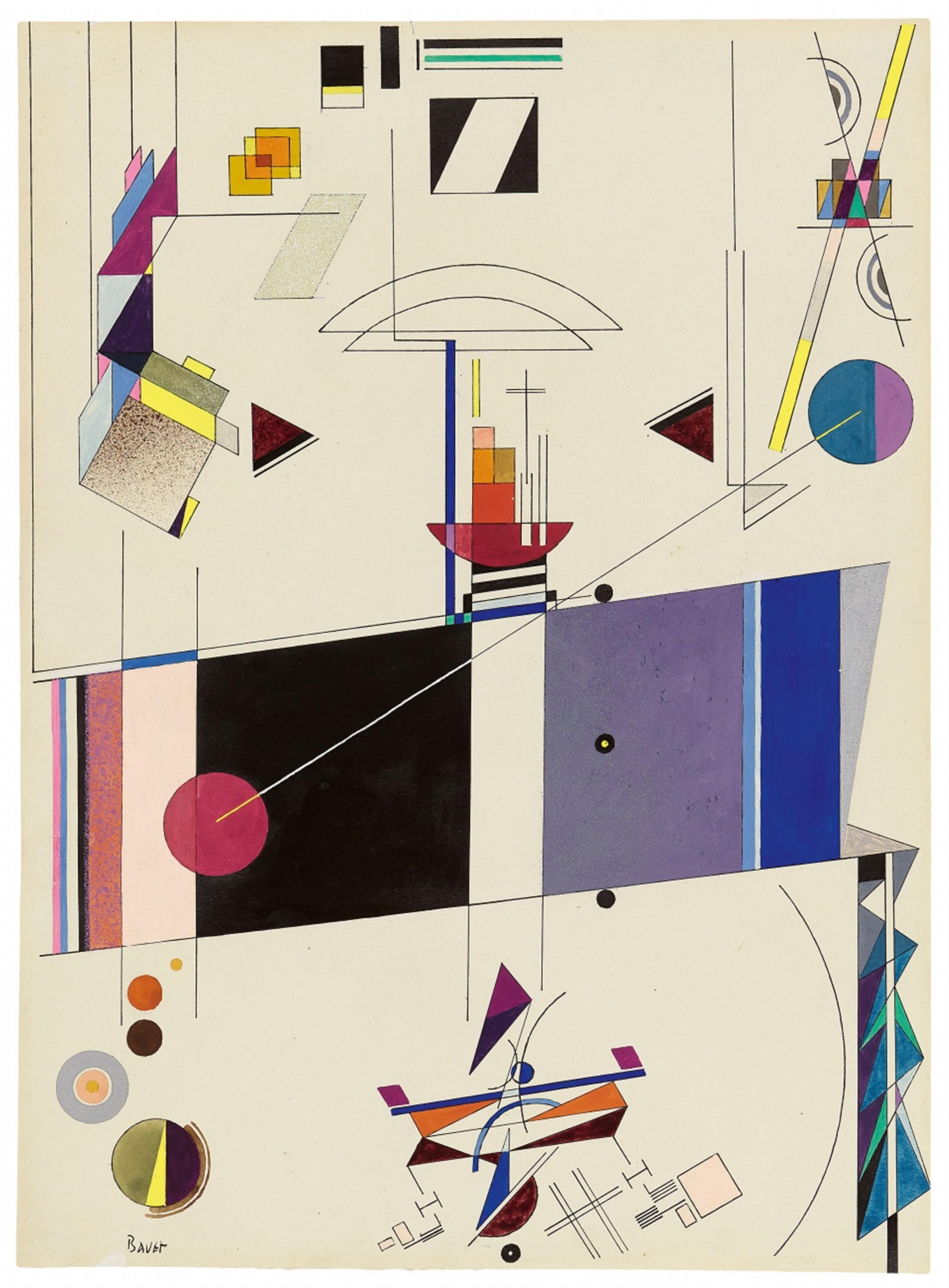Rudolf Bauer
Pizzicato
1931
Watercolour, tempera and India ink on firm chamois-coloured drawing paper 43.8 x 31.9 cm Framed under glass. Signed 'BAUER' in India ink lower left. - The edges minimally browned, slightly wavy; in excellent condition with vibrant colours.
“Pizzicato” comes from the field of music (how could it be any different with a Rudolf Bauer title?) and is the term for plucking a string that is normally bowed - generally producing a sharp, dry and soft staccato sound. It has actually been developed most effectively in areas such as jazz, where it is used during the solos of a deeply resonating contrabass. Music - and extending this sphere - the “spiritual” in general, were central concepts for Bauer: after all, in his admiration for classical music, particularly that of Bach and Beethoven, he drew programmatic parallels to the representation and interpretation of the nonobjective in painting. After the period with “Der Sturm” in Berlin and his contact with Dada, Futurism and Constructivism following the First World War, the field of art became crystallised in abstraction, in absolute form, for Bauer. “And though painting and music are very different mediums, in Bauer they find a common ground, that of the unmaterialistic and the intangible. All of this requires that we, the viewers, adopt a new art vocabulary and dedicate more time to the actual viewing of his paintings. [...] any great piece of music demands several careful listenings before its pure, rhythmic beauty is unfolded and appreciated. Bauer (like Kandinsky) saw beyond the genre, on into a truly Non-objective garden.” (Leonard Hutton-Hutschnecker, 1976, op. cit., p. 4). In this respect the historical significance of the reception of Rudolf Bauer's abstract works in the thirties - together with the works of Wassily Kandinsky - in the collection of Solomon R. Guggenheim in New York not only remains undiminished, the direct sense of their artistic kinship is also explained on the basis of the period itself. In this first major collection of abstract painting on the American continent, the pictures of Bauer and Kandinsky hung next to works by Moholy-Nagy, Gleizes and Klee. At that time these pieces were the most modern that anyone could even imagine, and they were introduced in 1939 through an exquisite museological presentation in the elegant rooms of a former car showroom. Only after the fateful disruptions of the Second World War did it become possible for a New York gallerist like Leonard Hutton to once again recall the memory of Rudolf Bauer to an international audience in the 1970s. Here we have a very fine 1931 piece (provenance: Hutton) from among Bauer's works on paper.
Provenance
Leonard Hutton Galleries, New York (frame label); Private possession, Switzerland
Literature
Cf. Rudolf Bauer 1889-1953, The Constructivist Years, exhib. cat. Leonard Hutton Galleries, New York 1976

